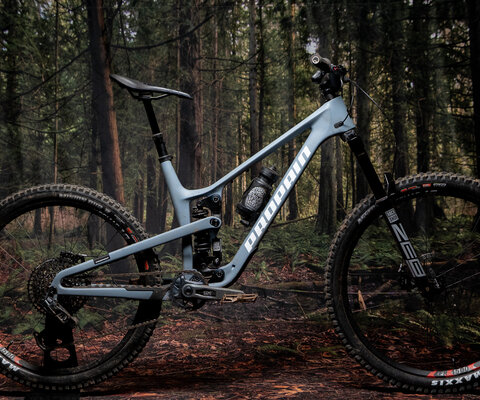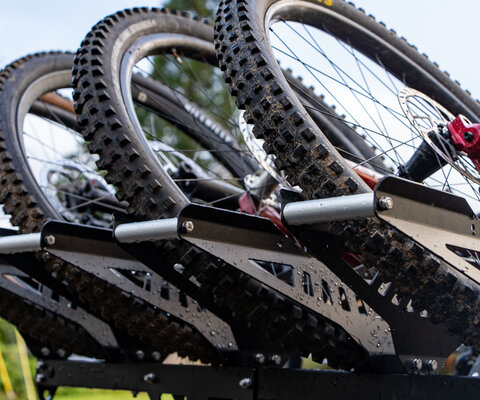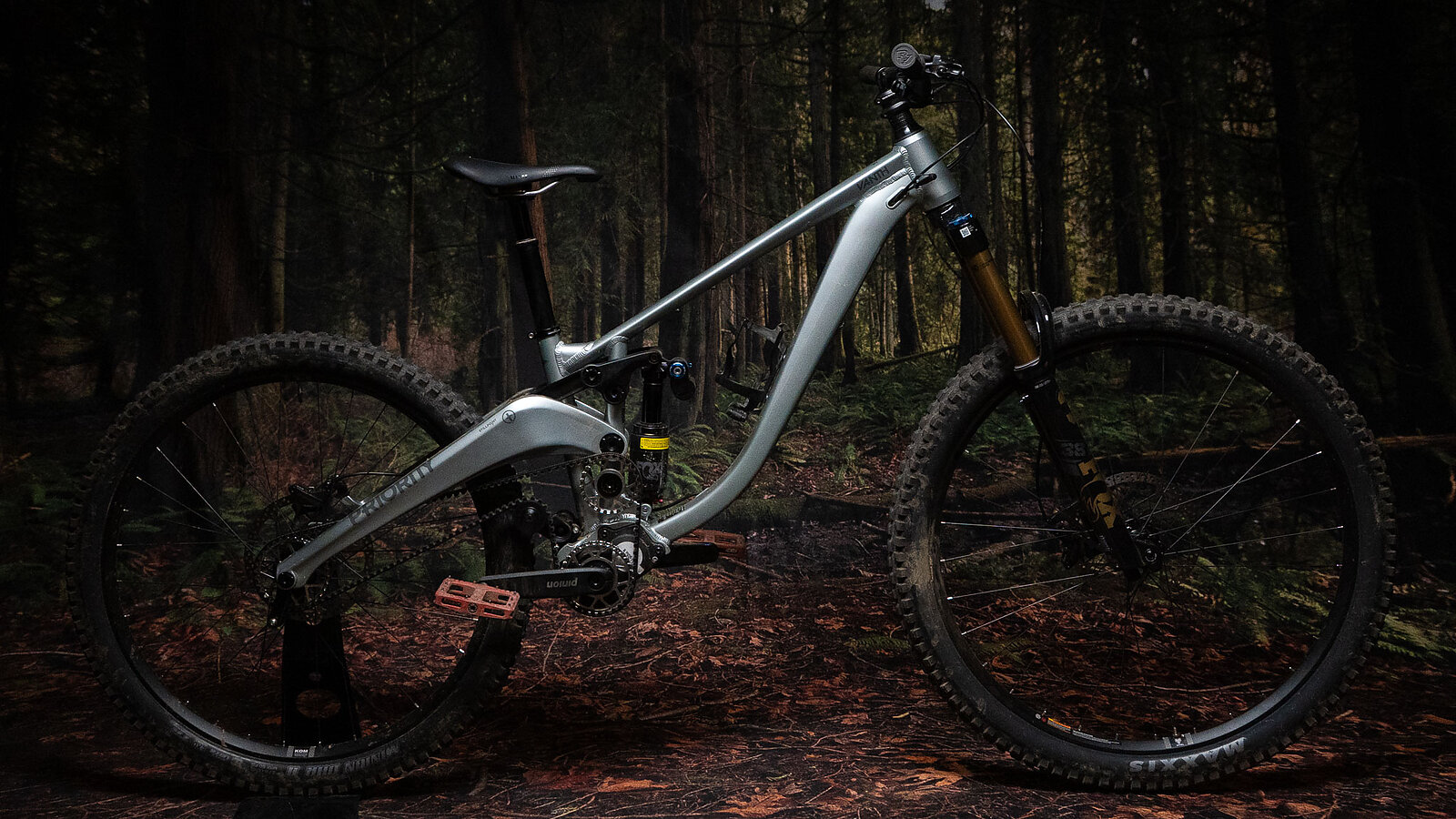
Priority Vanth Different, not scary.
Words and Photos by Cy Whitling
It’s rare to have an appropriately spooky bike lined up for Halloween, but the new Priority Vanth certainly fits the bill. The name comes from a pre-Roman Empire winged spirit tasked with guiding souls to the underworld. The brand behind the bike, Priority, is mostly known for its bulletproof, belt-driven commuter rigs. And, finally, the design-wizard behind this specific bike is Mike Schwartz of Morpheus cycles fame.
And the bike itself? It’s got a “third member,” an aluminum front triangle and carbon rear end, a really high pivot, and, of course, a Gates Carbon Drive running off of Pinion’s C1.9i Smart.Shift gearbox.
There’s a lot going on here, and we’ll dive deep into the weeds in this review. This bike raises several interesting questions—and offers partial answers to a few of them—but beneath all that noise, I keep coming back to one impression of the Vanth: it goes downhill quite well.
Priority Vanth Overview
- Travel: 165 mm (rear) 170 mm (front)
- Wheel Size: Mixed 29”/27.5”
- Size Tested: S2
- Build Tested: Performance Elite
- Head Tube Angle: 64°
- Measured Weight: 40.1 lbs (18.19 kg)
- MSRP: $5,999

Background on the Vanth
Priority is not, historically, a mountain bike brand. Instead, its origins lie in crowdfunded, ultra-reliable commuter bikes, with no chains to rust or derailleurs to go out of adjustment. So it should come as no surprise that the Vanth also forgoes a traditional drivetrain, in favor of a Pinion gearbox that’s driven by the electronic Smart.Shift system, and uses nine different gear ratios to deliver a 568 percent range. That gearbox is connected to the rear wheel with a Gates Carbon Drive belt that runs on a custom belt tensioner.
And of course, that belt spins on an idler pulley, because the Vanth’s Stillpoint suspension runs on a high single pivot, which drives the shock with a Knolly-esque pair of links. But, because nothing is simple about this bike, the main pivot and the idler pulley are mounted to the Vanth’s “third member” (it’s not the top tube, or the seat tube, it’s a third tube). This allowed Priority to place the pivot and idler where they wanted to, without being constrained by the rest of the frame’s geometry. A convenient side effect is that this allows for a very straight and uninterrupted seat tube.
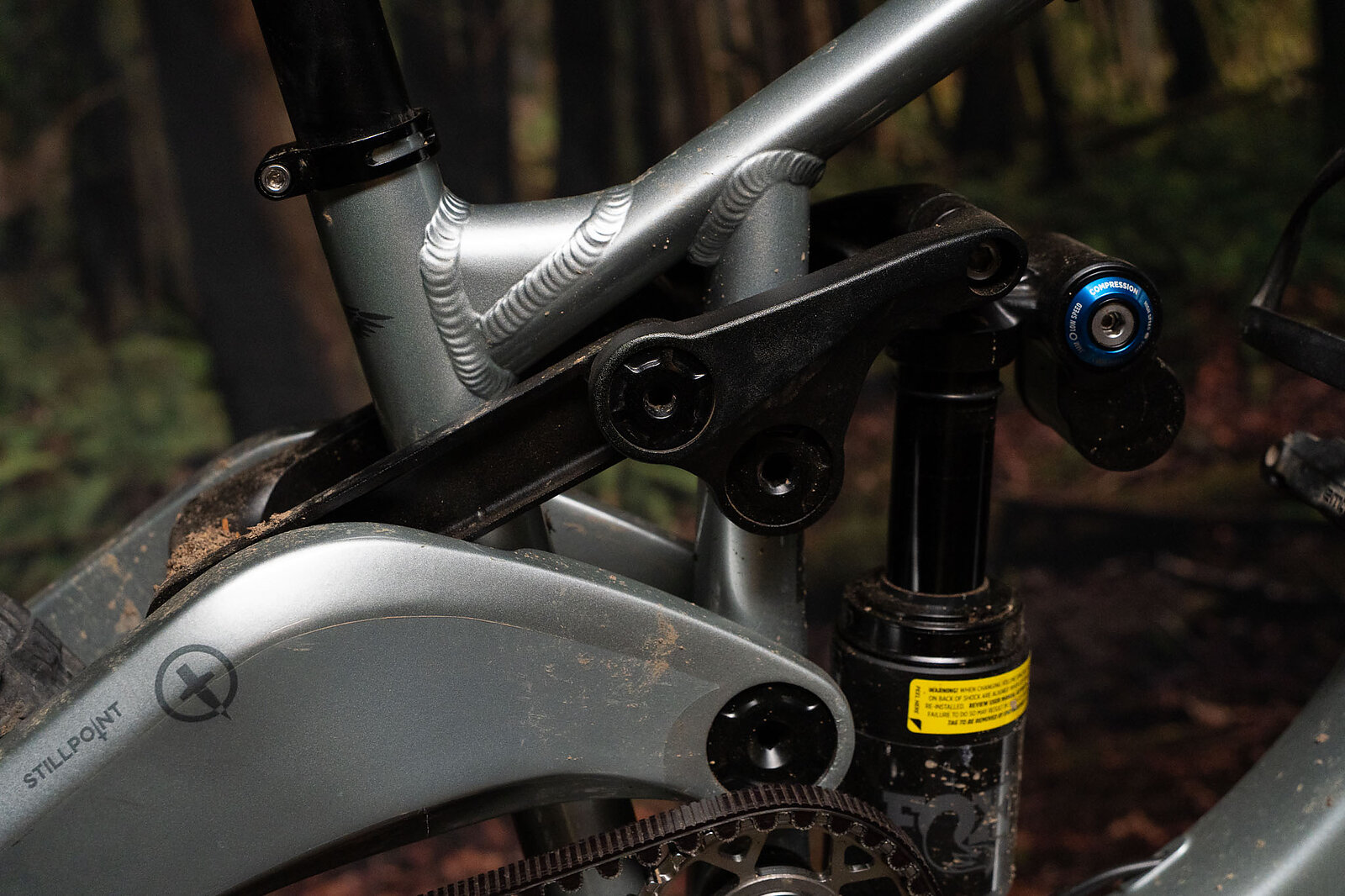
Priority’s leap into the deep, long-travel end of the mountain bike world is less surprising once you understand that Mike Schwartz is a driving force behind this project. Schwartz was the guy behind Morpheus Cycles (remember Anthony Messere boosting that hip out of the stratosphere at Crankworx in 2011?). Morpheus had a definitive gravity bent, with a lineup heavy on dirt jump, slope, and downhill bikes, as well as a certain unique disregard for convention around what the back half of a bike should look like.
All of that could perhaps be simplified down to: "Priority doesn’t usually make bikes with chains, and Schwartz doesn’t usually make bikes with normal rear triangles, so, of course, the Vanth has neither."

Priority Vanth Frame Details
This is where things get less weird and much more practical. First, the geometry. The Vanth’s numbers are well within the realm of modern “average.” The 64-degree head tube angle isn’t the slackest around, but it’s great for all-round gravity riding. The 78.5-degree seat tube angle makes for a nice upright pedaling position. The Vanth does fall into a common modern sizing conundrum. It comes in three sizes, with, respectively, 440, 475, and 510 millimeter reach figures that all share the same 448-millimeter rear center. And Vanth’s sizing recommends that I at 6’2” ride the S3 with a 510-millimeter reach. I have played that game before and regretted it. For the trails I ride in the Pacific Northwest, I don’t need or want that much bike in front of me. So, I disregarded convention and went with the S2 which fit me quite nicely.
Otherwise, the frame is nicely appointed. There’s plenty of room for a water bottle in the front triangle and production bikes will ship with a OneUp bracket for a tube and tools under the top tube. The default crank length is 165 millimeters, the cables are all routed internally, the seat tube is 31.6 millimeters in diameter, and the rear axle spacing is 148 millimeters with an HG driver, so swapping hubs around should be easy.
It is worth noting that removing and reinstalling the rear wheel on the Vanth doesn’t follow quite the same protocol as on a traditional, derailleur bike. You’ve got to remove the roller guard from the rear dropout (a very easy step) and then use a 3-way hex wrench to push the belt tensioner back before gently—without twisting or prying—unseating the belt from the cogs. It’s quite easy once you know the trick, but isn’t intuitive the first time around.
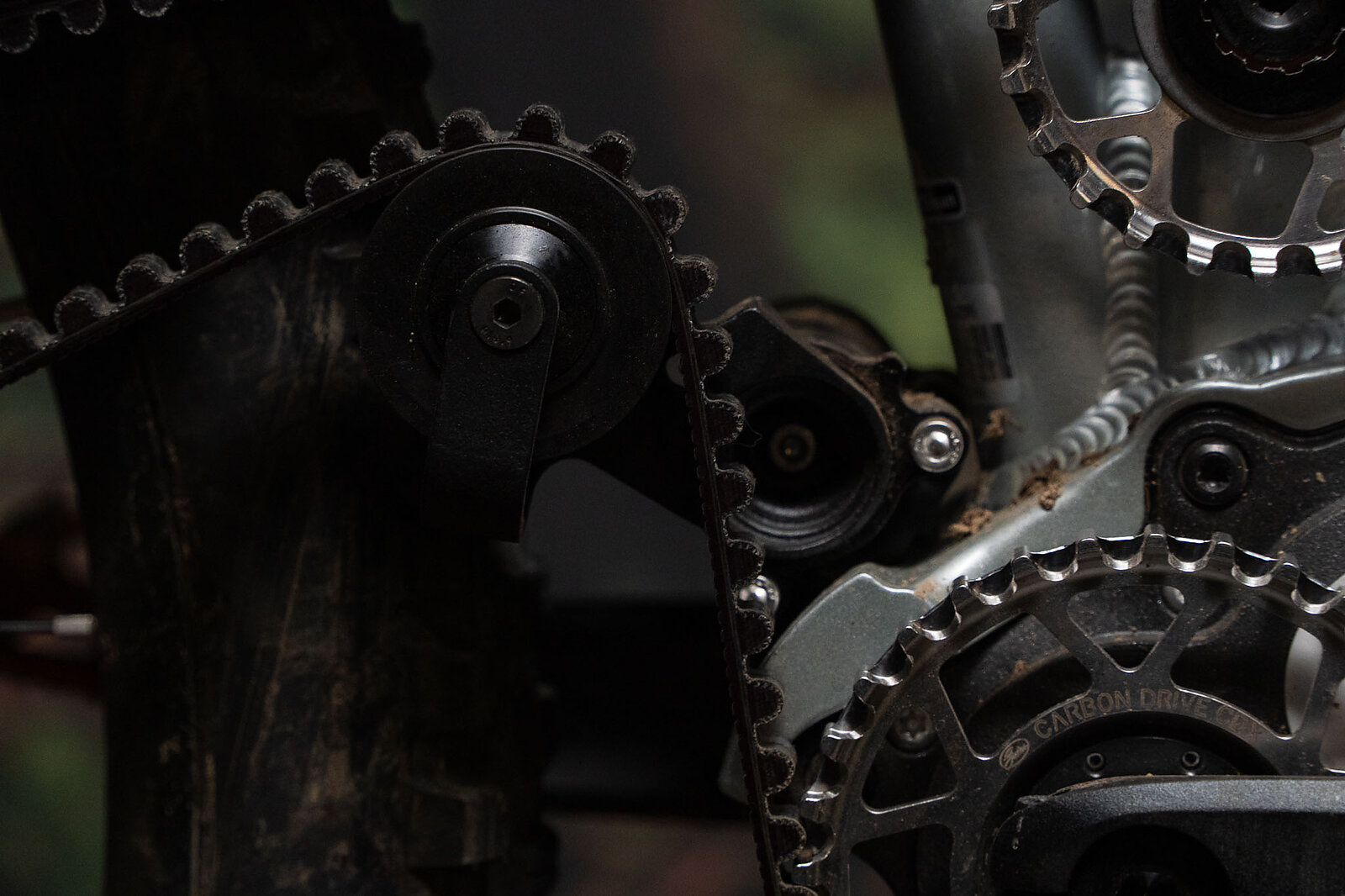
Priority Vanth Build
While most brands tend to differentiate builds by the drivetrain spec, Priority puts the same top-end Pinion Smart.Shift gearbox on all three models. That ($2,800 without belts or sprockets) gearbox delivers a 568 percent range with electronic shifting that simulates shifting under load. It uses a magnet system to time shifts with your cranks entering the “dead zone” of power, so that effectively the gearbox knows when it’s least loaded, and times its shifts around those moments.
The Vanth’s builds are demarcated by suspension spec, with the Performance Elite I’m riding coming in at the most affordable, with the option to bump up to Factory (with an upgrade to TRP Evo Pro brakes) or Podium (with a Fox Podium, carbon RaceFace wheels, and heaver casing tires).
The Performance Elite I rode was mostly good in terms of spec. The Fox 38 and Float X2 are excellent. The TRP Trail Evo brakes are adequate but not my favorite. I quickly upgraded to sintered Shimano pads for more braking power, and eventually threw a pair of Hayes Dominions on because I really liked how the bike descended, but found myself outrunning the brakes quickly.
The last notable spec choice is the tires. The Vanth comes with a MaxxGrip DHF in the front, and a MaxxTerra DHR II, both with an EXO casing. Most folks who are actually riding the Vanth to its (considerable) capability level, will immediately want to swap those tires out for something more burly. After the first ride, I threw on a Maxxis DoubleDown DHRII and High Roller III, and have been a happy camper since.
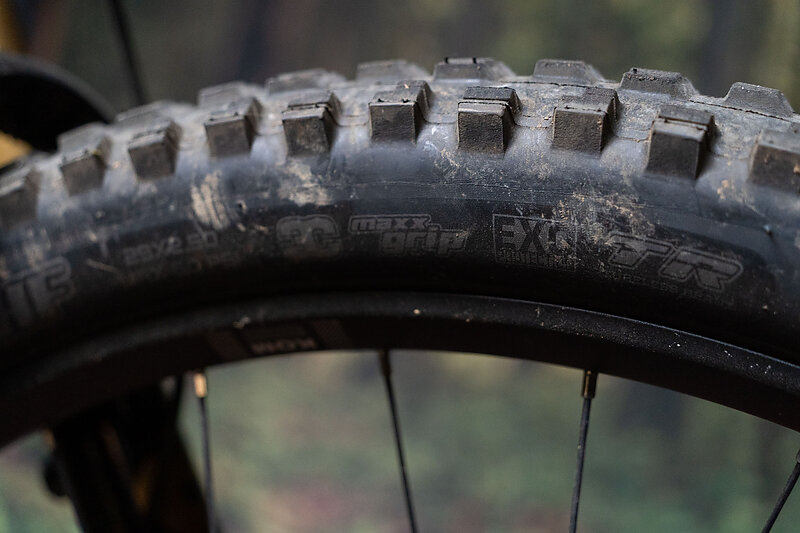

Descending on the Priority Vanth
Let’s eat dessert before we touch our veggies: The Vanth is one of the more natural, more capable, more enjoyable bikes for descending steep, technical trails that I’ve ridden. It’s a blast. It looks so wild and rides so predictably. My personal gold standard for descending performance is the Trek Slash Gen 6. The Vanth is the closest any bike has come to filling that Slash shaped hole in my heart. It’s got a very nice combination of great traction and plowability, without ever feeling ponderous or too planted. Some of that is probably due to the sizing. I don’t think I’d be as enamored with the S3, given how much longer it is. As it is, the geometry on the S2 is pretty much bang on for what I’d ask for on a bike with this much travel.
But the Vanth’s rear end deserves a lot of credit here too. It’s got a lot of anti-rise baked into its suspension, which means that when things get steep, the bike’s geometry doesn’t. The tradeoff is, of course, that when you’re on the brakes on flatter terrain, the rear suspension doesn’t erase bumps completely, but I personally have really gotten along with the balance the Vanth strikes here.

The Vanth is also a very quiet descender, both in sound and feel. There’s no chain flapping around and yanking on your feet. There’s no clanking on the stays, instead the only noise is the (rather loud) freehub. I’ve been running either an O-Chain or a Sidekick on my personal bikes for most of this year, and the Vanth takes that “no chain movement, no problems” feeling to another level. I think a Vanth with a silent hub would be quite enjoyable.
Finally, there’s the question of rear end flex. The Vanth isn’t the absolute stiffest bike around, but I never found it to be unduly squirmy under my 200-pound frame. I’ve done a lot of my riding on the Vanth in very wet, slippery conditions, and in situations where you’re desperate for traction, the combination of a nice high initial leverage ratio, lack of unsprung mass, and a somewhat more compliant rear end is very confidence inspiring.
The Vanth can handle natural, greasy tech well. But I was surprised at how fun it was to take a less plowy, more poppy and playful approach to trails. The Vanth can slam through most things but if you want to play around, it’s not unduly glued to the ground. No, it’s not the sort of bike that makes every grade reversal into a side hit, but it’s easier to get off the ground than its weight and high pivot might suggest.
That combination of plow when you need to, dance when you so desire, makes the Vanth a whole bunch of fun when you’re headed downhill. But what about when you’re not?

Climbing on the Priority Vanth
First, the good. The Vanth has a nice, upright climbing position, and a very efficient suspension layout. I’ve been riding a yet-to-be-released 150-millimeter travel bike that has significantly more suspension bob, even when locked out, than the Vanth does fully open. The suspension is not stealing any of your precious watts.
But the gearbox is. Or, at least, it really feels like the gearbox is. I haven’t done any real science, but bro science says that there’s a fair bit of extra drag in this drivetrain. It feels a little crunchy, with some gears feeling clunkier than others. Pinion says that the gearbox takes about 1,000 kilometers to break in and reach full efficiency, and that it rides smoother and smoother as it breaks in. The cynical part of my brain wonders how many riders are going to pedal that 620ish miles in a year.
I have a whole wad of notes about this in my phone, typed as I ground my way up hills: “The efficiency thing is more mental than physical I think.” “This is really annoying.” “Maybe this isn’t as big of a deal when you get used to it.”

My biggest takeaway is that you could totally own a Vanth and pedal it everywhere, and get used to it, and not be annoyed by it. But, you would need to just ride the Vanth. Because it only takes a few pedal strokes on a normal, non-gearbox bike to feel like you’ve been missing out on an easier life.
This is not an unfamiliar feeling for me. In fact, I’ve been through exactly this arc before. When I started backcountry skiing I bought a pair of frame bindings that worked with my alpine boots. They went uphill just fine, and I put in a bunch of big days on the Cascade volcanoes, and in the Rockies. “Who needs pin bindings?” I asked. I was confident in my strength, in my bindings, and they went uphill just fine.
But then I tried pin bindings and my house of cards crumbled in an instant. I haven’t skinned on frames since. You don’t know what you’re missing until you’ve experienced it. And I think the same is very true of the Vanth. As long as I just rode this bike, and set my expectations around it, I didn't find the efficiency to be that frustrating. But as soon as I hopped back on a traditional drivetrain bike, I felt notably fitter and faster.
That ski binding analogy leads me to another revelation about the Vanth. If you’re planning on mostly using this bike at a bike park, or to shuttle with, it’s awesome! I can imagine living somewhere like Kellogg, Idaho, and riding Silver Mountain on the Vanth and absolutely loving it. Similarly, if I lived in Whistler and did a bunch of laps off Top of the World, this bike would be a great fit. Those situations, where a full-on downhill bike doesn’t work because you still need to do some pedaling, but you want a very capable descender make a ton of sense for the Vanth, similarly to how side-country laps with easy exits make a ton of sense for frame bindings. (Yes, I know, CAST and Shift exist now, but don’t complicate the metaphor!)
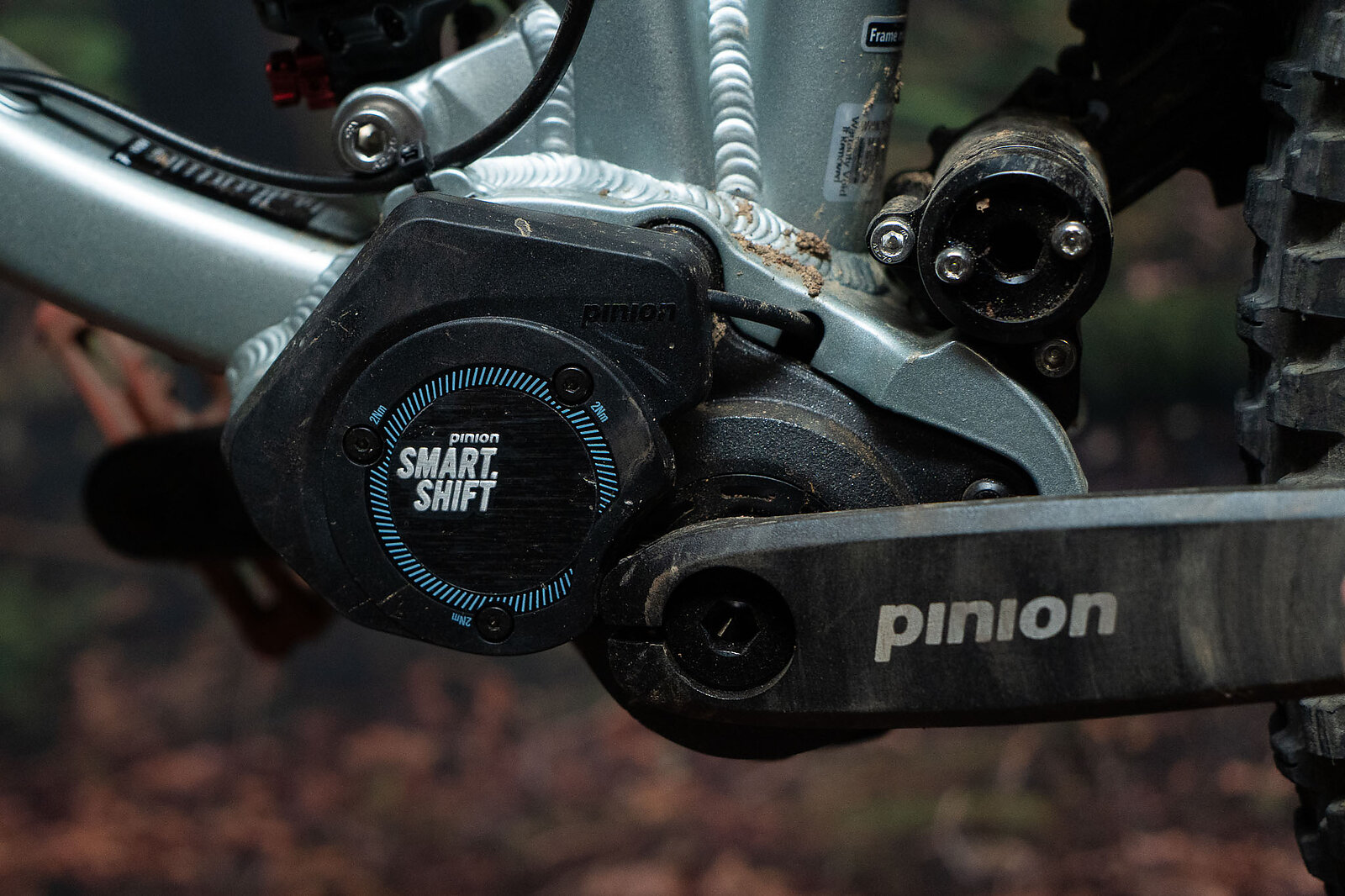
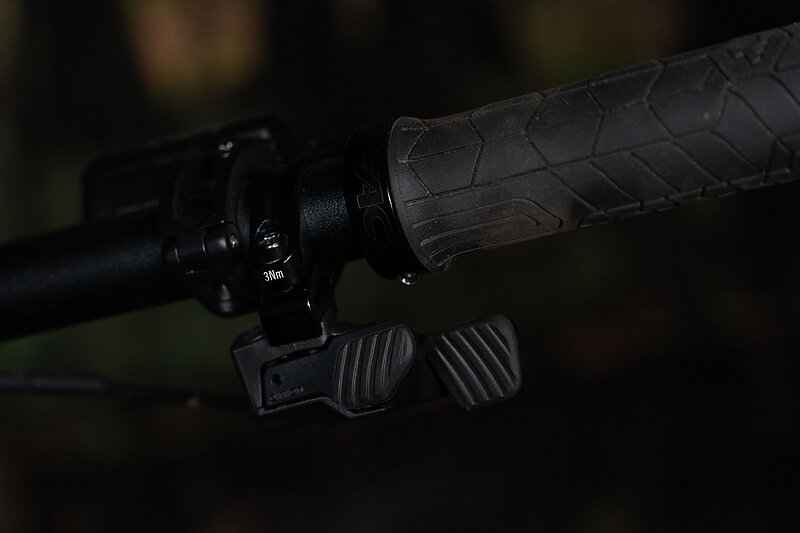
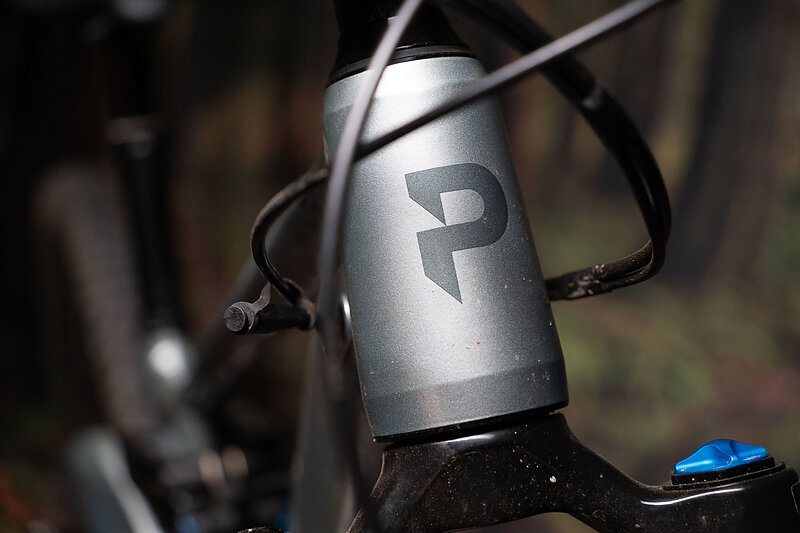
The Gearbox Conundrum
Cards on the table: I want gearboxes to work. Not because I’m discontent with the current crop of traditional drivetrains (quite the opposite), but because I think the idea is cool. I think less unsprung weight is good. I think a sealed unit that I only have to change the oil on once a year is cool. I think silent belts that never rust are a neat idea.
But, for me, and how I ride, I am not sure that the current Pinion gearbox solution cuts it. The tradeoff isn’t quite worth it. Beyond the efficiency issue, I found some of the gear jumps in the C1.9i gearbox to be a little abrupt. Covering 568 percent range with 9 speeds means that a few of the gaps (especially between the easiest and second easiest gears) are a little bit large.
I also experienced some aggressive creaking and popping from the drivetrain after a few rides. Some of that was due to a skipping freehub, and I cleaned and regreased that to positive effect. But some of that was also coming from the gearbox. Pinion says not to worry too much about this, and it did eventually resolve itself and quiet down on its own.
Of course, in other regards, the gearbox is very cool. Dropping a bunch of gears, while coasting, and then just being in that new, right gear when you start pedaling again is delightful. And the battery for the Smart.Shift system has an impressive life.
Finally, while, hypothetically, there’s much less to go wrong with the gearbox, if something does break, finding replacement parts isn’t guaranteed to be as quick and easy as heading to your local shop for a new chain might be. On that front, Priority prides itself on its customer service, and its 365-day-per-year availability to answer customer questions.
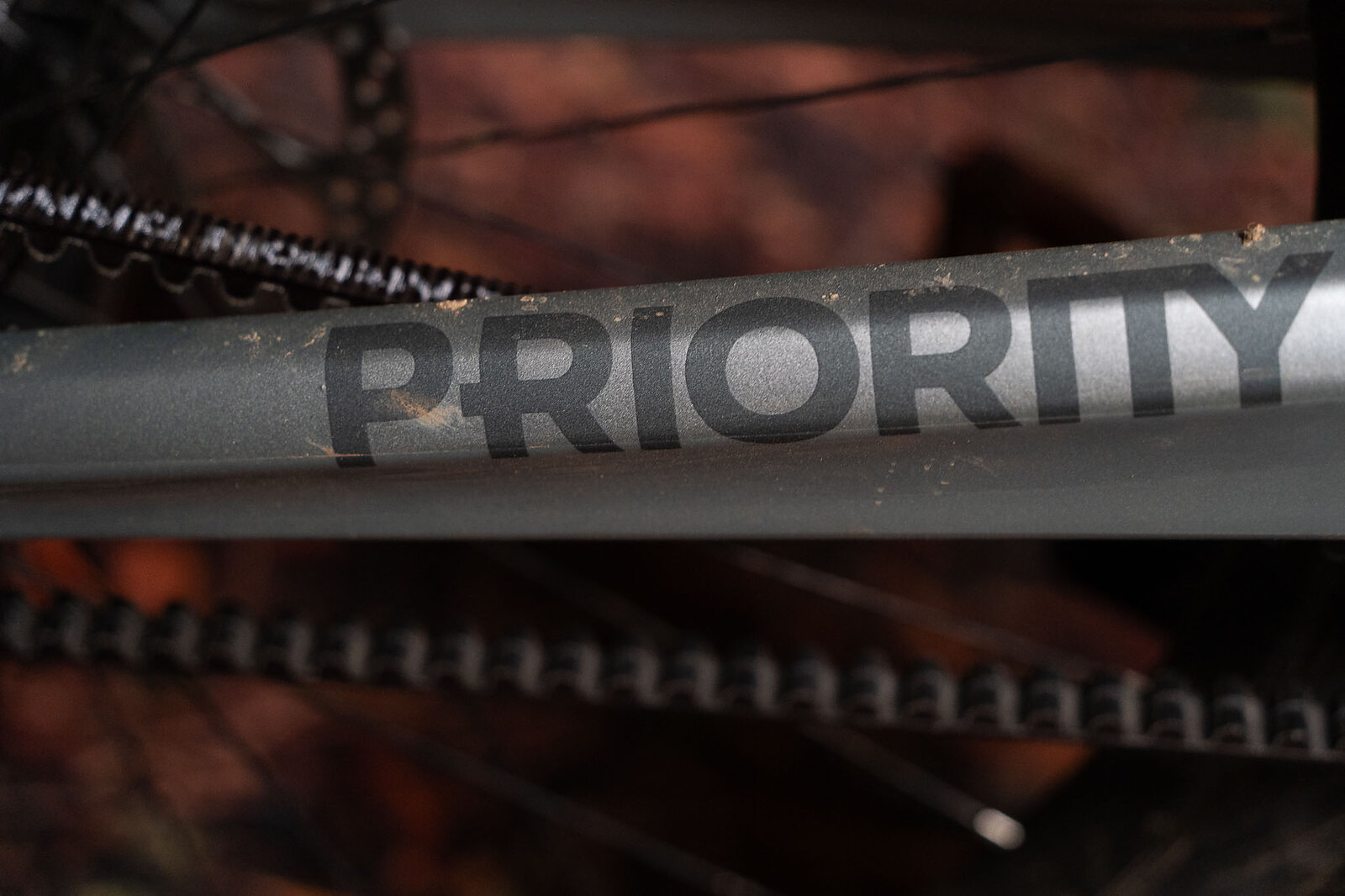
For Now
My favorite thing about the Priority Vanth is the contradiction that it presents. Visually, it’s a little scary, a little overwhelming. And then you ride downhill and the bike just disappears in the best way possible.
That’s why I’m excited to keep riding the Vanth through the winter. And yes, many of those rides will be shuttle assisted. But I’m excited to explore the long-term durability of this drivetrain and frame.
Learn more: Priority Bicycles

